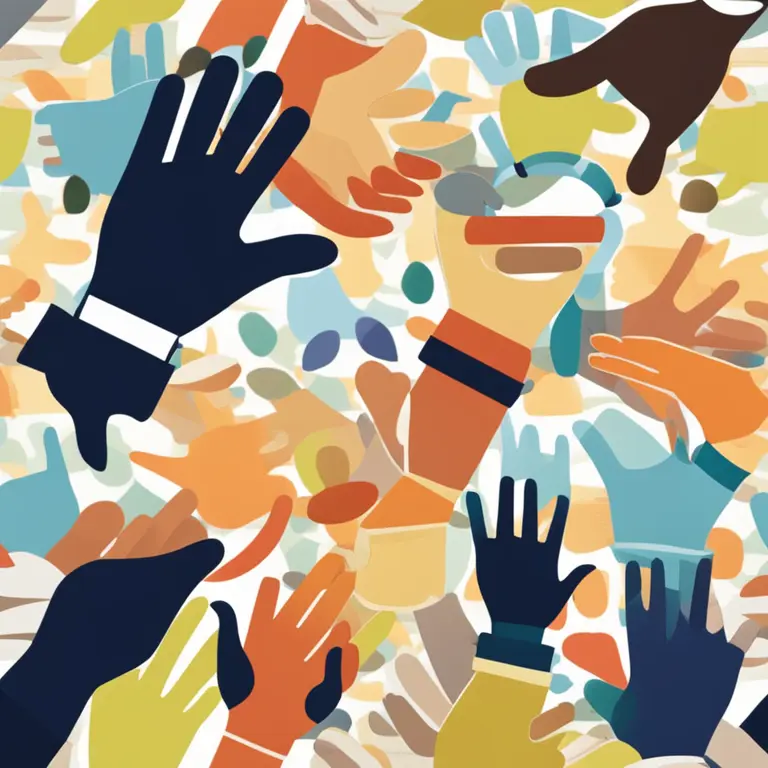
Insights from Palms: Interpreting Hand Gestures in Body Language
Delve into the world of non-verbal cues with our in-depth analysis of hand gestures and what they reveal about a person's feelings and intentions.
article by Nora Pennington
The Significance of Hands in Communication
Our hands are powerful tools for communication, capable of conveying subtleties that words often cannot. In social interactions, they play a vital role in projecting confidence, nervousness, openness, or defensiveness. The study of hand-related body language, therefore, opens a window into understanding our own behavior and that of others. Observing the angle of the palms, the direction of a point, or the clench of a fist can provide clues to a person's emotional state and intentions. As palmistry explores the lines on our hands for life insights, body language analysis interprets the dynamic movements and positions as a form of silent dialogue.

Palm Exposure and Its Interpretations
Exposing palms can symbolize honesty, submission, or openness. When people show their palms during a conversation, they may be signaling that they have nothing to hide. Conversely, hiding the palms might suggest withholding information or a sense of discomfort. Palm displays aren't solely a matter of truthfulness; they also gauge how receptive someone is to the ideas or emotions of others. In negotiations or persuasive speech, open palms can express a willingness to connect and engage on equal terms.

Reading Into Handshakes
The handshake, an age-old custom, has evolved into a complex gesture laden with meaning. A firm handshake typically reflects confidence and respect, while a limp grip often conveys uncertainty or disinterest. Contemporary cultural shifts also emphasize the sensitivity of power dynamics in handshakes, fine-tuning our perception of dominance and equality. Notice the placement of the hand: An upwards-facing palm can suggest humility or deferral, whereas a downwards-facing palm might subtly communicate control or superiority.

Gestures that Command Attention
Gesturing with the hands can dramatically affect the delivery and reception of a message. Illustrative gestures, such as using the hands to delineate the size or shape of an object, can enrich a narrative by providing visual reinforcement. Directive gestures, like pointing or using the hand to guide someone's gaze, are used to focus attention or assert authority. In professional or public speaking settings, mastering these gestures is crucial for engaging the audience and emphasizing key points.
Cultural Sensitivity in Hand Communication
It's essential to recognize that interpretations of hand gestures can be profoundly influenced by cultural norms. What is considered a positive gesture in one culture may carry a negative or even offensive connotation in another. The 'thumbs up' sign, for example, is a widely recognized affirmative gesture in many parts of the world, yet it is considered rude in some Middle Eastern countries. Thus, cultural literacy is critical in the global landscape to prevent misunderstandings and foster harmonious interactions.
Interlinking Palmistry and Body Language
While palmistry delves into the static lines and shapes on a person's hand to predict their future and traits, body language focuses on the dynamic aspect of hands in motion. Interestingly, there exists a synergy between the two, as both practices facilitate a deeper understanding of the individual. By combining the insights from the enduring patterns on the palms and the fleeting movements of the hands, one can form a more holistic picture of a person's psyche and behavioral tendencies.
Published: 1/11/2024
Modified: 1/12/2024
More predictions
Come back here soon to learn more about yourself and your future


Can We Trust Palmistry?
Delving into the realm of palmistry, this article examines its credibility and place in contemporary spiritual practices.


The Essence of Palmistry: Interpreting Lines and Shapes
Delve into the world of palmistry to discover the meanings behind the lines and shapes etched into the palms of your hands.


Palmistry: The Historical Overview
Delve into the dawn of palmistry and trace its journey through the corridors of time, uncovering the roots of this ancient practice.